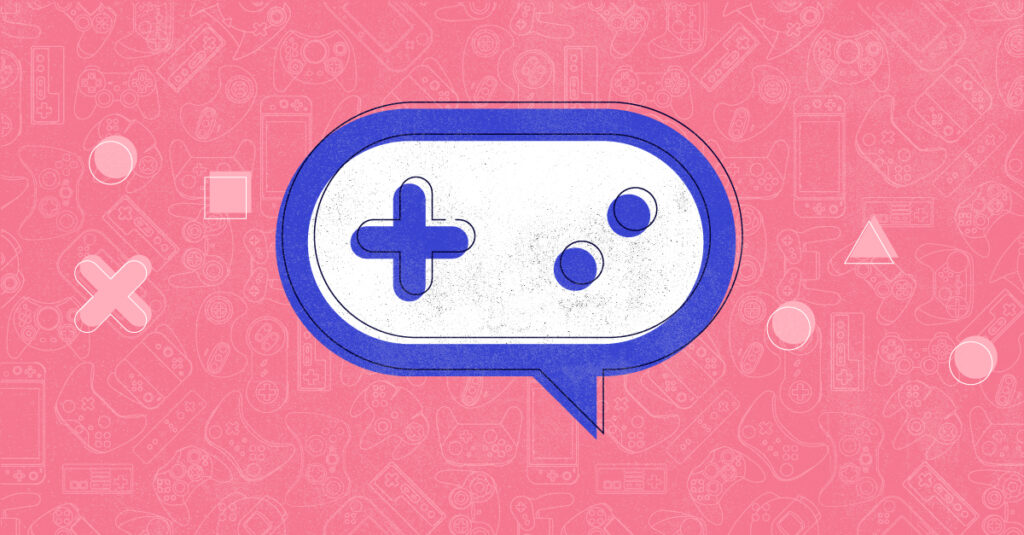Video games have come a long way since they drew Gen Xers to arcades in droves in the ’70s and ’80s. They now represent a massive global, intergenerational business. Worldwide revenue for video games is expected to reach $384.9 billion in 2023 and continue growing to $521.6 billion by 2027.
Worldwide, Statista reports that there are more than 3.2 billion gamers, many of whom live outside the U.S. Although it spans generations, this global audience skews young. In the U.S., not unlike many other places, 38% of gamers are aged 18–34, and 70% of those under 18 regularly play video games. This represents a huge opportunity to engage young audiences, but it can make localization that much more difficult.
Gaming translation is a key aspect of any global game development strategy. And younger audiences present unique challenges. Gen Z gamers, for example, are often one step ahead when it comes to the latest trends — areas that are highly relevant to translating materials for video games. To engage this important audience, you need a game localization strategy that connects with their needs and communication style, while also accounting for differences across geographical boundaries.
Video Game Translation 101
The work of video game localization encompasses far more than simply translating in-game dialog and gameplay elements. In many ways, this is the most straightforward aspect of the entire process.
Much more complex is the work of translating the entire gaming experience, from user guides and marketing materials to online and live support.
Consider a few examples. On one hand, you have to acknowledge the deep connectedness of younger gamers. If they encounter a bug or a problem with game mechanics, they’re likely to look not only on your website for support materials but also pick up their smartphones and scour vast networks of online gamers in search of a remedy.
If your support materials don’t speak their language or you haven’t effectively engaged with gamer communities in their area, you miss a valuable opportunity to enhance the gaming experience. On the other hand, you have to consider gaming translation issues that don’t directly concern gamers. Different countries have wildly different standards for what’s considered age-appropriate, for instance.
Your translation strategy must take this into consideration and translate marketing materials and supporting documents in a way that fits the target audience and any associated local age restrictions.
How to Support Gamers With Internationally Relevant Support
All of the above is complicated by the fact that gaming lingo among young gamers is constantly evolving — and it takes different shapes in different cultures and communities across the globe.
The support documents you offer, the websites you market from, your marketing strategy, and even the instructional resources like how-tos you offer, need to match the language of your audience. This not only helps improve their relationship with your brand but improves their game experience as a whole, which makes them more likely to play longer.
So, how can your gaming translation methodology account for all these nuances?
1. Get the Right Personnel on Board
When it comes to translating gaming content and supporting materials, nothing is more important than your personnel. From game designers to customer support reps to marketing gurus, everyone has to be on the same page. Hire a team that’s committed to engaging serious gamers in each target market, putting player experience as its top priority.
2. Engage Communities of Young Gamers Across Different Cultures
This strategy is particularly critical for engaging young gamers. As noted above, Gen Zers are resourceful and deeply engaged in online communities. If they want answers, they’ll head to Reddit, Discord, and YouTube to find them.
Any effective gaming localization approach must include initiatives for engaging these support communities in their various cultural contexts and social media channels. Modding communities, in particular, offer an invaluable opportunity to learn what your gamers want. These communities “modify” games with coding to make them appeal more to their wants. You can take these lessons forward in your development cycle.
3. Understand Age Ratings and Parental Consent Laws Around the World
Each country has its own rating system for video games, along with different laws surrounding what’s required for parental consent. Given that many video games target players that are under 18, you must have a thorough understanding of these laws and what they mean not only for game design but your gaming translation efforts. Failure to comply could mean you’re kept from engaging gamers in certain target markets entirely.
4. Develop a Dedicated Gaming Glossary
At times, keeping up with evolving gaming slang and lingo can feel tougher than a boss battle. Interactive online gaming sets the stage for an always-shifting landscape of “in” terminology. Developing and maintaining a glossary of these terms will ensure you’re better prepared to translate your gaming content across multiple languages.
The Unbabel Solution: Translation Without All the Work
Sounds like a lot of work, right? As a gamer might say, you need a translation team that’s truly “OP” to deliver that kind of localization work with consistent quality. Thankfully, you don’t have to build your own team to do it — Unbabel’s AI-assisted machine translation is already OP and ready to do the work for you.
Our language library and Translation Memory tools create your own personal glossary, built around your gaming materials and your gamers. As you localize content to new audiences, the software learns more about your translation needs to provide increasingly accurate translations, even for marketing materials around new games or new demographics.
Our recent acquisition of Bablic also ensures that your supporting web content is translated and fully optimized for search engines in your various target markets. Whether you need to translate game manuals and resources or engage support requests in several languages, our AI-powered solution can help you level up. And, because all of this is backed by our Quality Estimator and a team of native speakers for quality assurance, you can be confident that your translations for gaming content are as accurate as they are efficient.
Localizing video game materials and support for niche audiences across the world can be as complicated as coding the games themselves. Young gamers don’t have a lot of patience for brands that can’t keep up, so it’s critical to get your translations right the first time, every time.
Is your CX strategy primed for hard mode? Download our checklist and find out.












